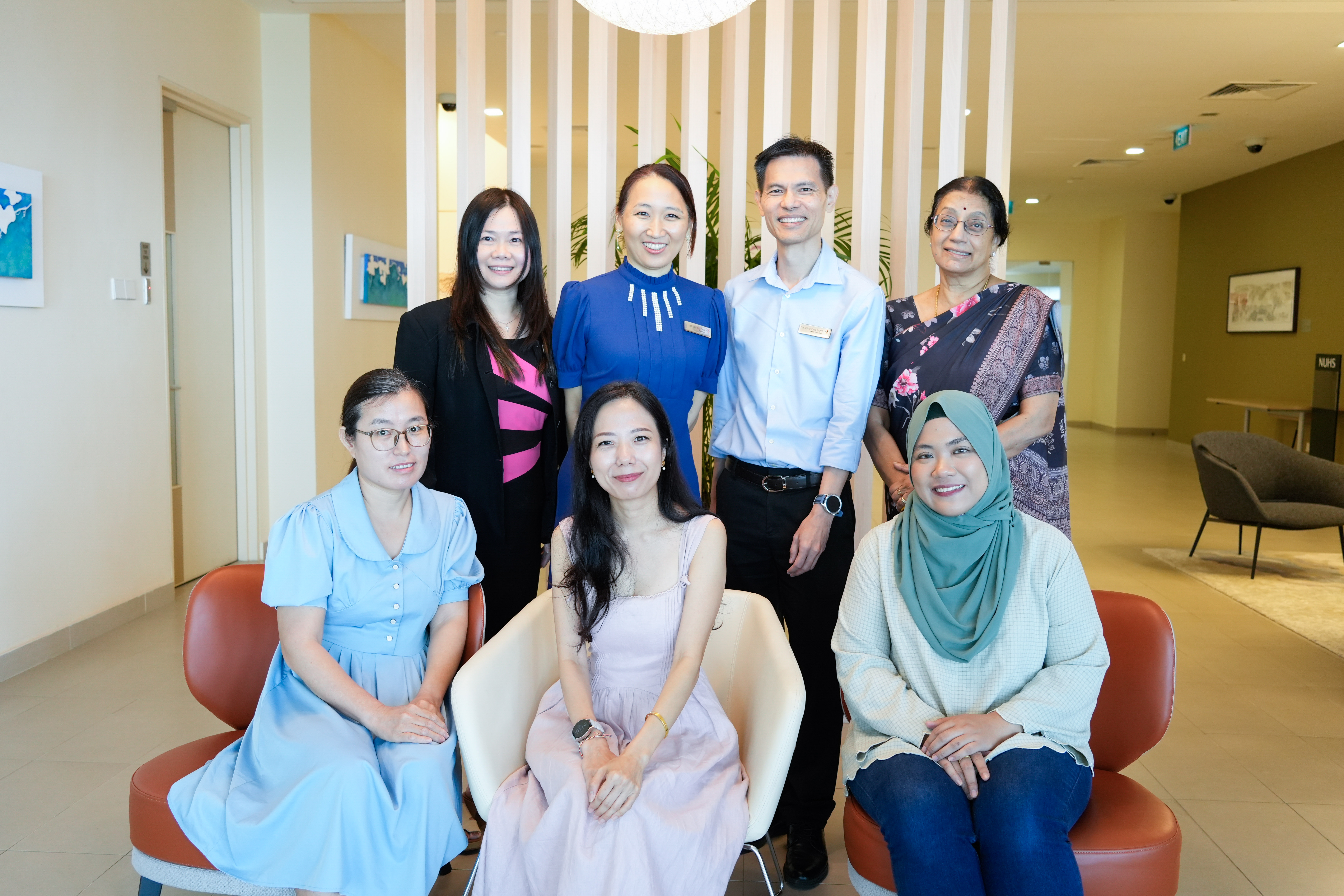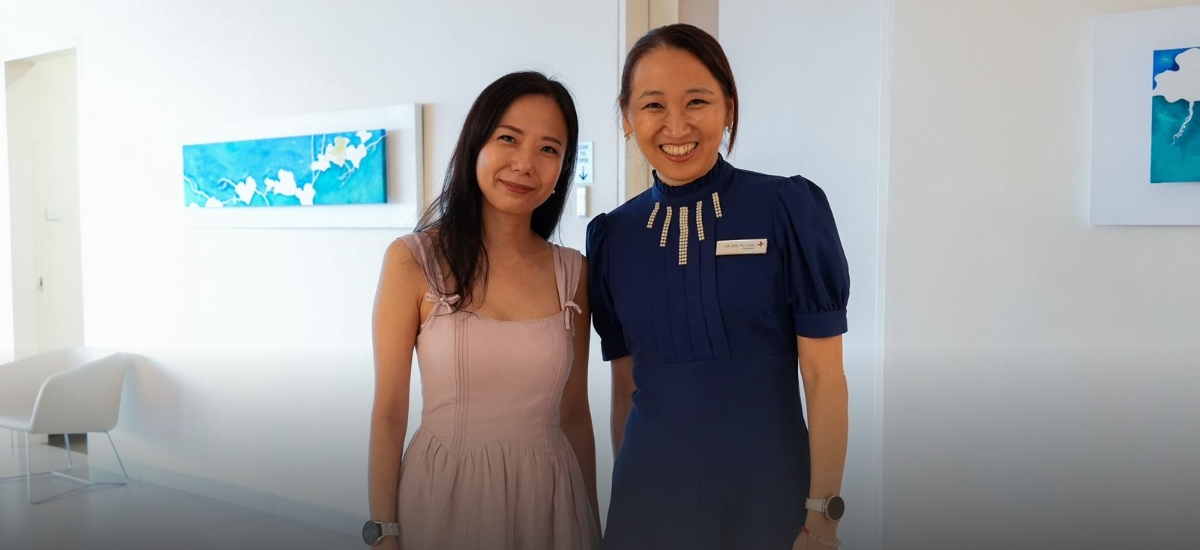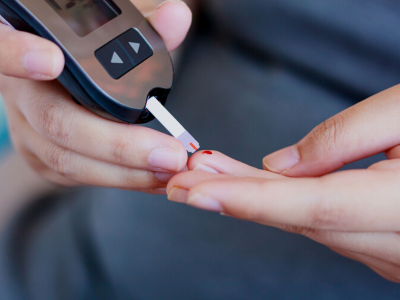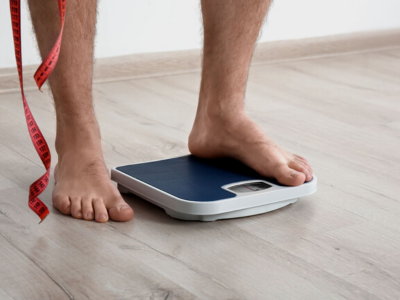Published on 26 September 2025
Not just for nine months: NUH’s new service follows mothers after pregnancy to lower their lifelong risk of diabetes.
When Mdm Cheryl Goh, 40, was told she had gestational diabetes mellitus (GDM) during her second pregnancy, she was taken aback.
“I was in total disbelief. I even went back to retake my oral glucose tolerance test (OGTT) because I just couldn’t imagine I would have gestational diabetes, especially when I didn’t have GDM for my first pregnancy,” she said.
Her experience reflected a broader concern. Studies showed that women with GDM had at least a 70 per cent increase in lifetime risk of developing type 2 diabetes. The risk was greatest in the three to six years after delivery, and half of these mothers eventually progressed to type 2 diabetes within 10 years.
First dedicated service launched
The initiative integrated obstetrics, endocrinology and community care under a single multidisciplinary team, ensuring mothers received follow-up from pregnancy through to at least three to five years after birth.
“GDM doesn’t end at delivery. Although many women with GDM are relatively young, their long-term risks are real. Women with GDM faced increased lifetime risks of diabetes, heart disease and fatty liver,” said Dr Eng Pei Chia, Consultant at the Division of Endocrinology, NUH, who led the service.
NUH leads new model for GDM
Previously, GDM care in Singapore was managed in stages. Most women were cared for by their Obstetrics and Gynaecology (O&G) team until delivery, with endocrinologists stepping in only if diabetes persisted after birth.
For those whose blood sugar returned to normal, follow-up often tapered off after the six-week oral glucose tolerance test (OGTT), unless women arranged annual checks themselves.
The new NUH model changed this. From the point of diagnosis, both O&G and endocrinology teams now co-manage patients, providing continuity through pregnancy, delivery and into the postpartum years.
Low-risk patients: Referred to the National University Polyclinics (NUP) for annual blood tests and lifestyle support. A streamlined pathway allows fast referral back to NUH if specialist care is needed.
High-risk patients: Continue specialist care at NUH for at least three to five years post-delivery, managed by the hospital’s diabetes team.
All patients: Undergo annual blood tests for lifelong monitoring.
Whether managed at NUP, followed at NUH, or attending annual blood tests, mothers remain under the same clinical team, allowing for seamless handovers and quick referrals if needed.

Patients Mdm Geng Yan Juan, Mdm Cheryl Goh and Mdm Nur’Huda Binte Kamsani (seated), who reversed their condition under NUH’s postpartum GDM service, with their care team including Dr Eng Pei Chia and Adj A/Prof Khoo Chin Meng (standing).
Lifestyle changes for the long term
For women juggling newborn care and work, lifestyle adjustments could be challenging. Mdm Goh made changes to her diet and daily routine, though consistency was not always easy.
“I’ve shifted to balanced meals with slow-release carbs, cut down on refined sugar, and built in regular light exercise like brisk walking after meals and lifting weights at home. The hardest part was staying consistent with two young children. Having a supportive healthcare team checking in and explaining my condition made it easier and less overwhelming,” she said.
“By supporting women to make sustainable lifestyle changes through personalised routines, diet and exercises, we could help them maintain good health and stay diabetes-free for as long as possible,” he said.
Protecting women’s health and families
New workflow for GDM patients at NUH
|
For women, the message is clear: gestational diabetes is not just a temporary condition tied to pregnancy. It is a lifelong health signal that deserves sustained attention.
For more information on gestational diabetes and its management, visit NUHS website.
In consultation with Dr Eng Pei Chia, Consultant, and Adj A/Prof Khoo Chin Meng, Head & Senior Consultant, Division of Endocrinology, Department of Medicine, NUH.




